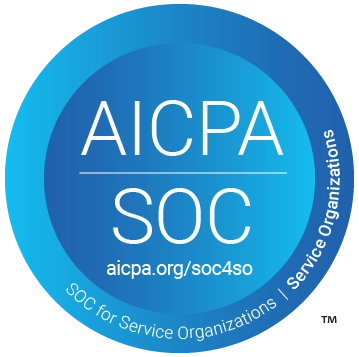Log In to My PreK-12 Platform


Supervision: A Redefinition, 9th Edition
Format Options:
Loose-Leaf Purchase
Unbound loose-leaf version of full text
Shipping Options
- Standard
- Next-day air
- 2nd-day air
Orders within the United States are shipped via FedEx or UPS Ground. For shipments to locations outside of the U.S., only standard shipping is available. All shipping options assume the product is available and that processing an order takes 24 to 48 hours prior to shipping.
Hardcopy
Complete text bound in hardcover or softcover
Shipping Options
- Standard
- Next-day air
- 2nd-day air
Orders within the United States are shipped via FedEx or UPS Ground. For shipments to locations outside of the U.S., only standard shipping is available. All shipping options assume the product is available and that processing an order takes 24 to 48 hours prior to shipping.
Note: Connect can only be used if assigned by your instructor.
Connect (6 Months Access)
- Digital access to a comprehensive online learning platform
- Includes homework, study tools, eBook, and adaptive assignments
- Download the free ReadAnywhere app to access the eBook offline
Connect + Loose-Leaf
- Comprehensive online learning platform + unbound loose-leaf print text package
- Connect includes homework, study tools, eBook, and adaptive assignments
- Download the free ReadAnywhere app to access the eBook offline
Shipping Options
- Standard
- Next-day air
- 2nd-day air
Orders within the United States are shipped via FedEx or UPS Ground. For shipments to locations outside of the U.S., only standard shipping is available. All shipping options assume the product is available and that processing an order takes 24 to 48 hours prior to shipping.
* The estimated amount of time this product will be on the market is based on a number of factors, including faculty input to instructional design and the prior revision cycle and updates to academic research-which typically results in a revision cycle ranging from every two to four years for this product. Pricing subject to change at any time.
Instructor Information
Quick Actions (Only for Validated Instructor Accounts):
The ninth edition of Supervision: A Redefinition is a research-based guide to the practice of supervision that aims to clarify the major challenges teachers and supervisors face within the policy context; focus on essential, foundational understandings that feed the integrity of teaching and supervision; and explore the complexities of the practice of supervision and teaching which supervisors must deal with. The 9th edition re-defines supervision once again in light of the complex demands being placed on principals and central office administrators, while continuing to emphasize the book’s original theme of human perspectives.
Instructors and students can now access their course content through the Connect digital learning platform by purchasing either standalone Connect access or a bundle of print and Connect access. McGraw-Hill Connect® is a subscription-based learning service accessible online through your personal computer or tablet. Choose this option if your instructor will require Connect to be used in the course. Your subscription to Connect includes the following:
• SmartBook® - an adaptive digital version of the course textbook that personalizes your reading experience based on how well you are learning the content.
• Access to your instructor’s homework assignments, quizzes, syllabus, notes, reminders, and other important files for the course.
• Progress dashboards that quickly show how you are performing on your assignments and tips for improvement.
• The option to purchase (for a small fee) a print version of the book. This binder-ready, loose-leaf version includes free shipping.
Complete system requirements to use Connect can be found here: http://www.mheducation.com/highered/platforms/connect/training-support-students.html
Main Features
- LMS Integration
- Print/Loose-Leaf Book Add-On Availability
- Presentation Slides & Instructor Resources
- Question & Test Banks
- Adaptive Assignments
- Student Progress Reporting & Analytics
- Essay Prompts
- Polling
- Prebuilt Courses
- Interactive Exercises
- eBook Access (ReadAnywhere App)
- Remote Proctoring (Proctorio)
- Subject-Specific Tools
About the Author
Thomas Sergiovanni
Thomas J. Sergiovanni is Lillian Radford Professor of Education and Administration in Trinity University, San Antonio, Texas. He received his BS degree (1958) in elementary education from the State University of New York, Geneseo; his MA degree (1959) in educational administration from Teachers College, Columbia University; and his Ed.D. degree (1966), also in educational administration, from the University of Rochester. Sergiovanni also holds the Doctor of Humane Letters degree from the University of San Diego and the Doctor of Humane Letters degree from the State University of New York. From 1958 to 1964, he was an elementary school teacher and science consultant in New York state and taught in the teacher education program at the State University of New York, Buffalo. In 1966, he began nineteen years on the educational administration faculty at the University of Illinois, Urbana-Champaign, where he chaired the department for seven years. At Trinity University, Sergiovanni teaches in the school leadership program and in the five-year teacher education program. He is senior fellow at the Center for Educational Leadership and the founding director of the Trinity Principals' Center. A former associate editor of Educational Administration Quarterly, he serves on the editorial boards of the Journal of Personnel Evaluation in Education, , Catholic Education: A Journal of Inquiry and Practice and Schools: Studies in Education. Among his recent books are Moral Leadership: Getting to the Heart of School Improvement (1992), Building Community in Schools (1994), Leadership for the Schoolhouse: How Is It Different? Why Is It Important? (1996), Rethinking Leadership (1999), The Lifeworld of Leadership: Creating Culture, Community, and Personal Meaning in Our Schools (2000), Leadership: What's In It For Schools (2001), Strengthening the Heartbeat: Leading and Learning Together in Schools (2005) and The Principalship: A Reflective Practice Perspective, 5E (2006)
Robert Starratt
Robert J. Starratt is Professor and Program Director in Educational Administration at the School of Education of Boston College. He received his Masters degree in Philosophy from Boston College, his Masters degree in Education from Harvard University, and his Doctor of Education degree from the University of Illinois, specializing in administration and curriculum theory. He has written extensively about educational leadership and the process of change. His recent books include: The Drama of Schooling/The Schooling of Drama, The Drama of Leadership, Building an Ethical School, and Transforming Educational Administration.
Vincent Cho
Accessibility
Creating accessible products is a priority for McGraw Hill. We make accessibility and adhering to WCAG AA guidelines a part of our day-to-day development efforts and product roadmaps.
For more information, visit our accessibility page, or contact us at accessibility@mheducation.com
Affordability
Reduce course material costs for your students while still providing full access to everything they need to be successful. It isn't too good to be true - it's Inclusive Access.
Need support? We're here to help - Get real-world support and resources every step of the way.

